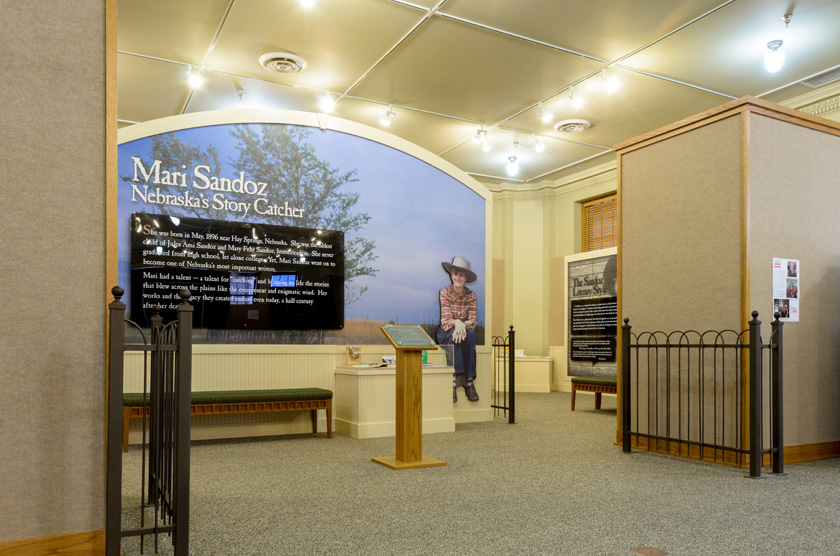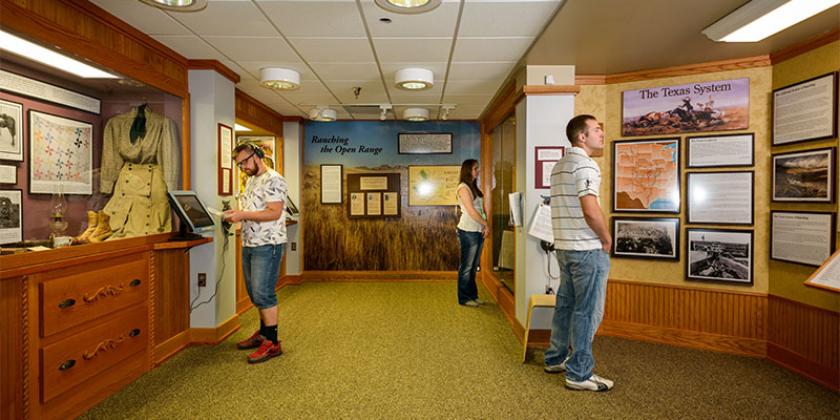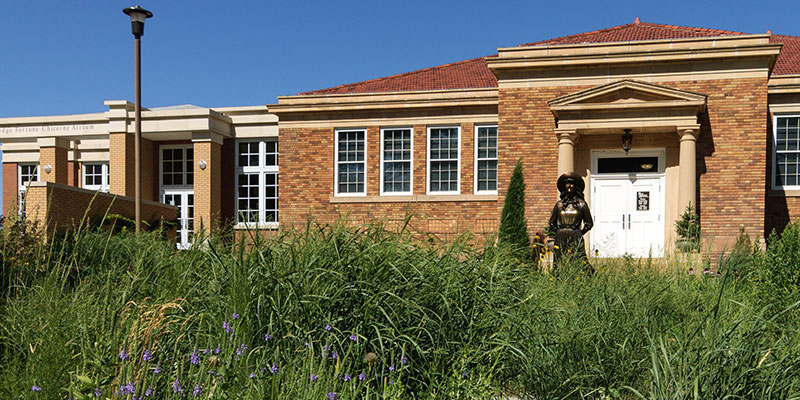The Mari Sandoz High Plains Herirage Center features a constant rotation of exhibits on a diverse range of historical and artistic subjects, stop in and see what's new, check out our permanent exhibits, or learn about our collection of traveling exhibits that can come to you!
Permanent Exhibits

Carmen and John Gottschalk - Mari Sandoz Gallery
This permanent exhibit space tells the story of the life and literature of Mari Sandoz. Using photographs and objects from the Center’s Collections, the exhibit is a great introduction to a ground-breaking author or a way to delve deeper into an author you may already be familiar with.
The exhibit examines the topics of her writing – landscape, advocacy for Native Americans, writing style, and dedication to research – through the lens of her personal experience.
This exhibition space is located on the main floor of the Sandoz Center.
- Choose question

C.F. Coffee Gallery
The C. F. Coffee Gallery is dedicated to the history of Cattle Ranching on the High Plains. Exhibits in the gallery space begin with the movement of cattle from Texas to the High Plains, the open range era, and the transition to the ranching system we know today.
The Coffee Gallery is the newest of the exhibit spaces and is still in development. The primary focus of the Gallery’s work has been collecting archival resources for use by the students at Chadron State College and researchers from around the world. For more information about the archival resources available, please contact the Center.
This exhibit space is located on the lower level of the Sandoz Center’s Chicoine Atrium.

Heritage Gardens
The Heritage Gardens project, which began in the spring of 2006, reflects the region’s prairie, native, and ranching cultures. It is a living, teaching collection on the campus of Chadron State College. The Gardens are a cultural, historical, and environmental learning space. Learn More
The High Plains World of Claude A. Barr & Heritage Gardens
Claude A. Barr (1887-1982) was a South Dakota cattle rancher who attained international acclaim as an eminent plantsman of the plains. Through his Prairie Gem Ranch, he supplied Great Plains seeds, plants, and information to the scientific and gardening world for many years. His achievements inspired the formation of the Great Plains Native Plant Society in 1984.
Barr’s life work is depicted in his posthumously published book Jewels of the Plains. This book is still the definitive work on plains wildflowers and their cultivation. With original photographs, the hardback edition of Jewels of the Plains is now out of print. The copies that can be found are the prized possessions of gardeners around the world.
A small exhibit on Barr and his life and work are located on the main floor of the Sandoz Center. Through the support of Chadron State College, the High Plains Herbarium, and the Nebraska Statewide Arboretum, the Center is home to the Claude Barr Garden. Featuring a sample of the plants that Barr wrote about in Jewels of the Plains, the Gardens are located on the east side of the Center. They are open to public.
For more information Claude Barr and the botanical history of the region, please visit the Chadron State College Herbarium.
